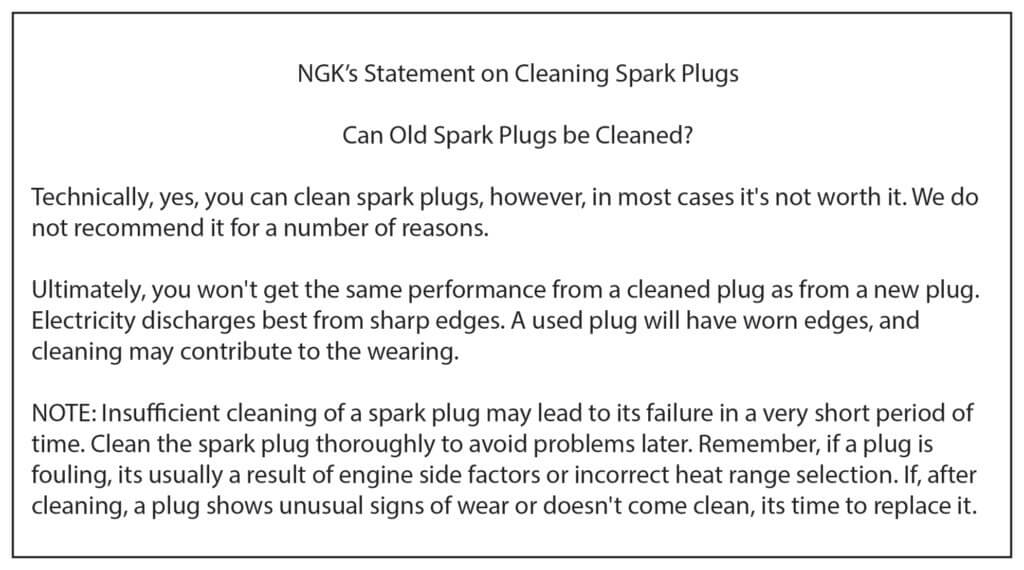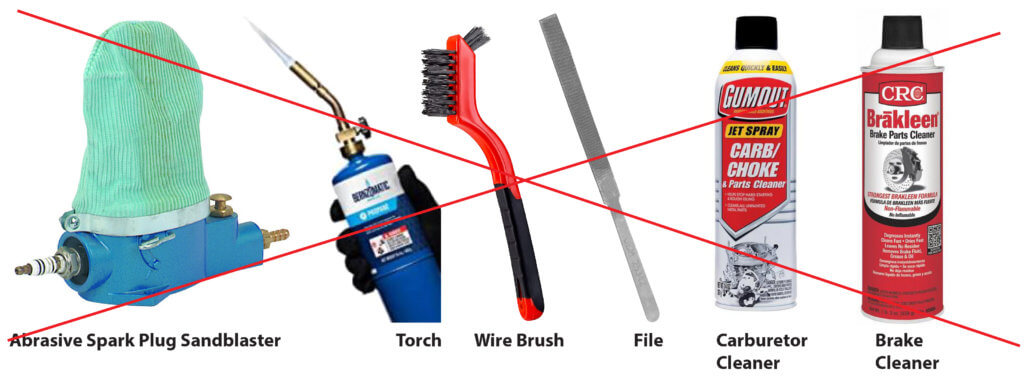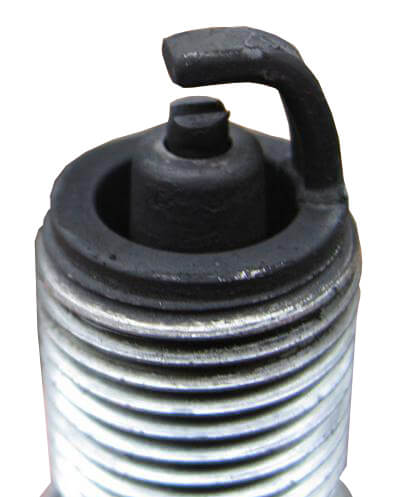Cleaning spark plugs
Why Cleaning Spark Plugs May Not Be a Good Idea
This is important: Most spark plug manufacturers don’t recommend cleaning spark plugs. I’ll get into their reasoning in a minute. But if you decide to ignore their advice and go ahead with cleaning your spark plugs, make sure don’t follow the really bad advice you find online.
Here’s why spark plug manufacturers don’t recommend cleaning spark plugs
1) If you have deposits on the spark plug, it’s because you have an engine, ignition or fuel problem. Cleaning your spark plugs won’t fix the root problem.
2) Cleaning a spark plug degrades its performance. Sparks jump from the sharpest part of the center electrode to the sharpest part of the side (ground) electrode. Any cleaning method (blasting, filing, or sanding) that abrasively removes deposits from the center or side electrode will degrade the spark plugs performance, resulting in a weaker spark, higher firing voltages and ignition coil damage.
3) Leaving ANY deposit on the plug will cause it to misfire even more because the missed portion will become the easiest path to ground.

How not to clean spark plugs
NEVER use a spark plug blasting device or any kind of abrasive to clean deposits off a spark plug. Abrasive blasting will erode the sharp edges of the center and side electrode. The abrasive will also open the pores on the porcelain insulator, allowing it to accumulate deposits even faster.
NEVER use a file, sandpaper or wire brush on either the center or side electrodes. Again, any erosion of the sharp metal edges will degrade spark plug performance. Filing the center electrode is an outdated technique that will dramatically reduce spark plug performance.
NEVER use a wire brush to clean off deposits. Any time you use a metal device on porcelain you embed metal particles into the pores of the porcelain (think of the metal marks on your kitchen sink or bathroom toilet when you’ve used metal scrapers). The embedded metal particles create a path to ground on a spark plug, causing misfires.
NEVER use a torch to burn off deposits on a spark plug. It’s true that spark plugs are routinely subjected to 2,500°F. But that heat is only for brief periods. The spark plug tips are rapidly cooled on the next intake stroke by the incoming air/fuel mixture. So the heat isn’t constant like when you use a torch. Also, the plug is installed in the cylinder head and head during use, so the heat is conducted back through the insulator to the cylinder head. When you hold a spark plug in free air and heat it with a torch, you overheat the plug and degrade the seal between the porcelain and the metal shell, causing the spark plug seal to fail.

Don’t use these for cleaning spark plugs
Best cleaners for cleaning spark plugs
Throttle body cleaner and fuel injector cleaners are specifically designed to clean carbon deposits. They’re far more effective than brake cleaner or even carburetor cleaner for removing hard carbon deposits on your spark plugs.
Don’t use carburetor cleaner for cleaning spark plugs
Many online videos and posts suggest using carburetor cleaner or brake cleaner. Carburetor cleaner is designed to dissolve the gum deposits formed by degraded gasoline. Brake cleaner is designed to dissolve brake grease and friction material deposits. That’s not what you’re dealing with for spark plugs. You’re dealing with carbon deposits. So use a cleaner that’s specifically designed to remove carbon buildup—throttle body cleaner or fuel injector cleaner.
To use throttle body cleaner for cleaning spark plugs:

Typical carbon fouled spark plug. Use throttle body cleaner or fuel injector cleaner to wash off the carbon soot.
Lay the spark plugs on a rag and spray the throttle body cleaner on the electrodes and insulator. Let it soak until the cleaner evaporates. Repeat until the carbon washes off. If the buildup is severe, spray the cleaner into a spray can cap and let the tips of the plugs soak in the cleaner. Use a stiff nylon brush to remove the buildup. Then rinse the tips and insulators with throttle body cleaner.
Make sure you remove all deposits!
Partial cleaning is worse than no cleaning! If you leave any deposits on the center electrode, insulator or side electrode, you will create a misfire path to ground.
Check the spark plug gap before reinstalling
Adjust the gap if necessary.
Removing a spark plug damages the nickel plating on the spark plug threads
Most new spark plugs come from the factory with a nickel plating that eliminates the need for anti-seize. The plating is designed for one-time use only. If you remove the spark plug, you must use anti-seize during the re-install. Reduce the torque setting on your torque wrench by 15%-20% to prevent over-torquing.
©, 2021 Rick Muscoplat
Posted on by Rick Muscoplat